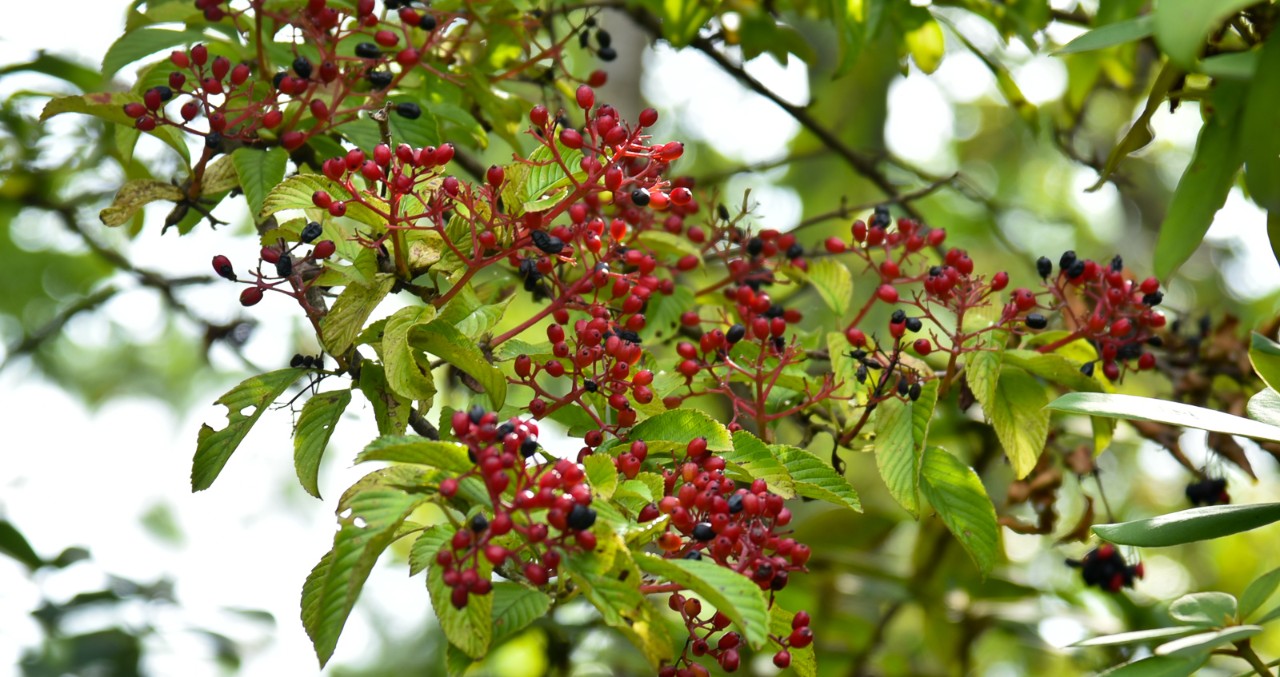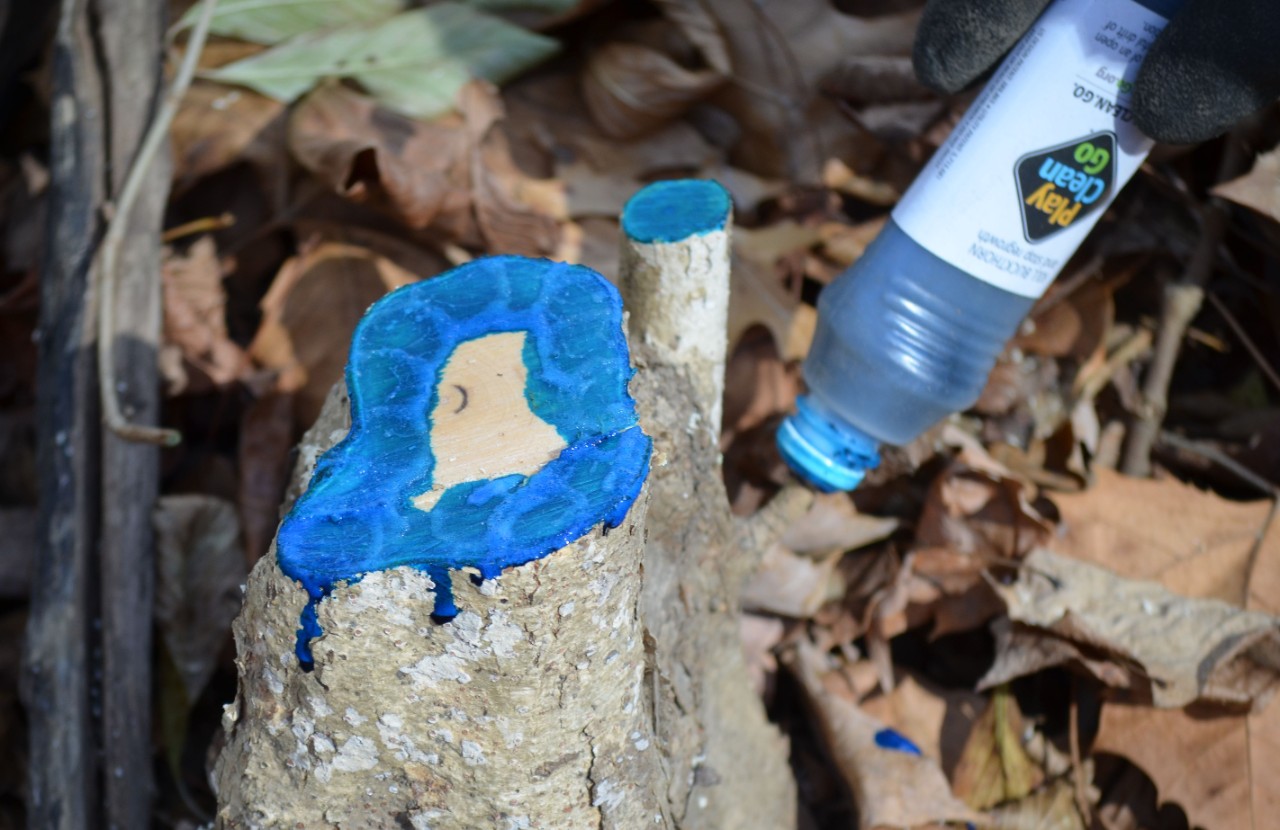
New plant invader takes over Eastern forests
Ornamental shrub becoming more common in wild areas of Midwest
A pretty ornamental shrub from Japan found in many people’s yards is sprouting wild in an increasing number of parks and forests across the United States.
Now researchers at the University of Cincinnati warn that the shrub, Siebold’s viburnum, is showing up in many public forests across southwest Ohio.
Landscapers plant Siebold’s viburnum because it is hardy, grows in sun or shade and doesn’t need a lot of water. It has pretty white blooms in the spring and produces colorful berries.
The invasive viburnum is sold and planted in all 50 states and has been identified as an invasive species in 10 so far, including New York. The Lower Hudson Partnership for Regional Invasive Species Management warned that Siebold’s viburnum is crowding out native plants in some of its parks.
“A large, quick-growing shade-tolerant shrub with a high reproductive potential, the species is capable of changing both the composition and density of the shrub layer in habitats it invades by outcompeting other vegetation,” the environmental group said.
“It’s probably going to become a problem in more states eventually,” botanist and UC College of Arts and Sciences Professor Denis Conover said. “It spreads pretty easily.”

UC Professor Denis Conover studies nonnative invasive species as a botanist in UC's College of Arts and Sciences. Photo/Joseph Fuqua II/UC
Sprouting in city parks
Conover said the shrub comes from part of Asia that has a similar climate to that found in the Midatlantic and Eastern United States.
“It grows in Japan in a similar latitude to the Midwest, so the plants will do very well here,” Conover said.
“Birds like to eat its berries, so it has some ecological value. But it would be better to plant native viburnums instead,” he said.

UC Professor Denis Conover and Drew Goebel applied a solution of herbicide to the sawed trunk of a nonnative viburnum bush to prevent it from sprouting new growth after it was cut down. Photo/Denis Conover
The United States is home to many native species of viburnum. But nonnative, invasive species of viburnum are increasingly showing up growing wild around Cincinnati, said Drew Goebel, a conservation technician with Cincinnati Parks.
“These plants are a problem in other parts of the country,” Goebel said. “They’re not officially a problem here yet.”
Ironically, Goebel said one reason viburnum hasn’t overtaken woodlands in Southwest Ohio is because another invasive species beat it here. Goebel said Amur honeysuckle dominates the understory in many local forests.
“They haven’t been planted in sufficient numbers here to explode like we’ve seen other plants do,” he said. “And there’s a lot of competition from Amur honeysuckle.”
But new invasives such as Siebold’s viburnum are quick to take root in places where volunteers and city workers have removed honeysuckle, he said.

Professor Denis Conover studies nonnative, invasive species such as this porcelainberry in UC's College of Arts and Sciences. Photo/Lisa Ventre/UC
“We’ll see other invasive species creep in like Higan cherry or Amur cork tree. And now viburnum,” Goebel said.
The city is working to eliminate the invasive viburnum before it becomes a problem.
“We’ve killed a lot of viburnum in California Woods and hundreds of them at French Park,” he said of two city parks.
Conover said the nonnative viburnum also was found at a third city park, Burnet Woods, next to UC’s Uptown campus. Last fall, he and Goebel demonstrated how the plant can be controlled by sawing through the heavy trunk and applying a pesticide to the outer edge of the sawed stump to prevent it from sprouting new growth. The two are collaborating on a new study examining successful ways of controlling the invasive plant.
States like Ohio are taking steps to address the spread of nonnative, invasive species that are causing agricultural or ecological harm. But there are no restrictions on selling or planting nonnative viburnum.
“We have proof that they can escape and reproduce in the wild. But there are no regulations on planting them now,” Goebel said. “And there’s no public awareness about the potential problems they pose. I feel like we need to get on top of them.”
Featured image at top: Siebold's viburnum. Photo/Akira Koishikawa
More UC research into invasive species

UC Department of Biological Sciences Head Theresa Culley stands in a grove of nonnative, invasive pear trees. Photo/Joseph Fuqua II/UC
Next Lives Here
The University of Cincinnati is leading public urban universities into a new era of innovation and impact. Our faculty, staff and students are saving lives, changing outcomes and bending the future in our city's direction. Next Lives Here.
Related Stories
Ancient Maya used sustainable farming, forestry for millennia
June 24, 2022
University of Cincinnati researchers found evidence of sustainable agriculture and forestry spanning a millennia in one ancient Mayan city.
Psychedelics may help people reinvent themselves
February 24, 2023
Psychedelics might help people change unwanted behaviors by helping them reinvent their perceptions of themselves, according to new research by the University of Cincinnati.
Psychedelics face corrupting influence of financial interests
September 22, 2022
Psychedelics such as magic mushrooms offer promise for addressing addiction, post-traumatic stress and other difficult-to-treat conditions. But University of Cincinnati postdoctoral researcher Neşe Devenot says the field is fraught with ethical concerns and financial interests.
